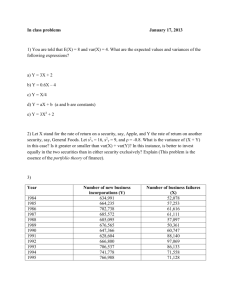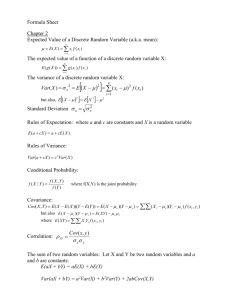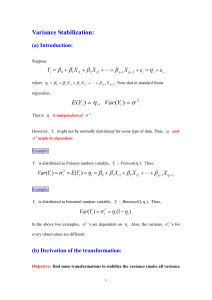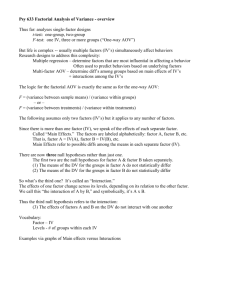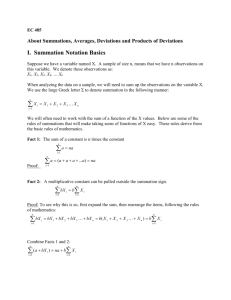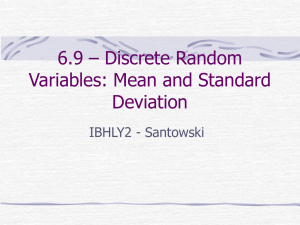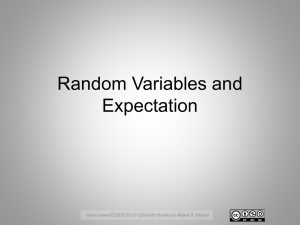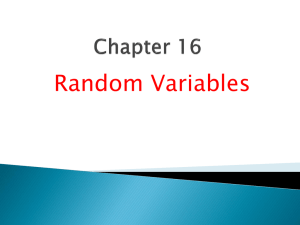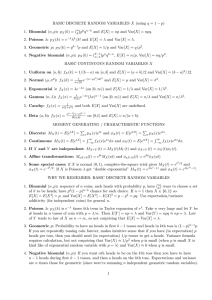beals exercises
advertisement
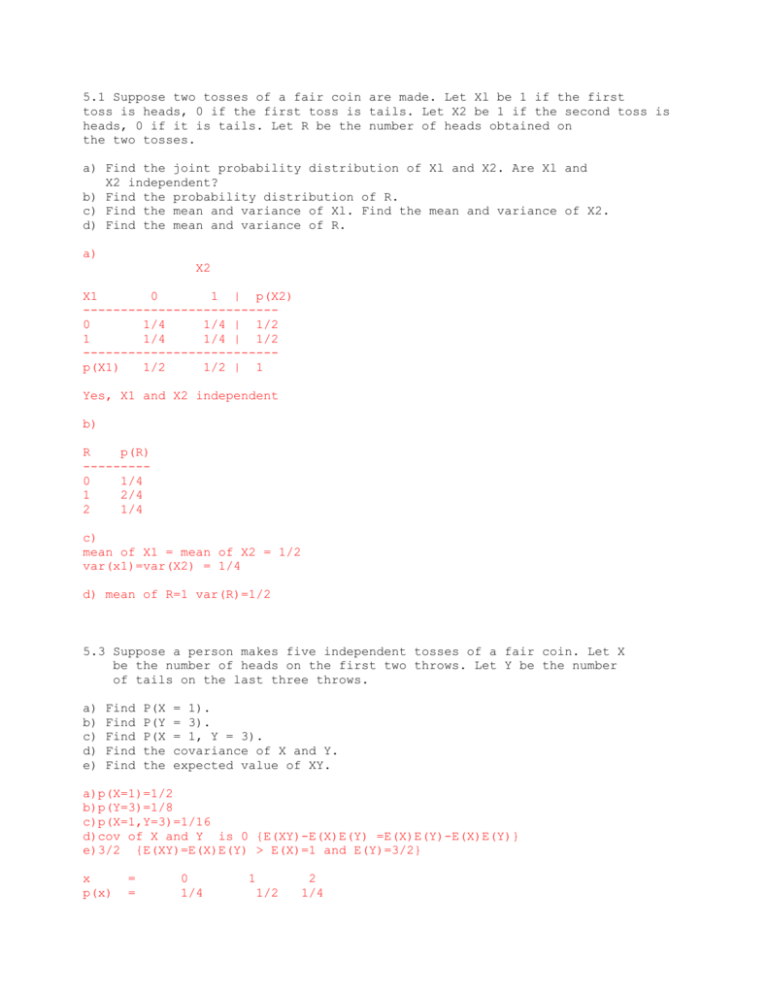
5.1 Suppose two tosses of a fair coin are made. Let Xl be 1 if the first
toss is heads, 0 if the first toss is tails. Let X2 be 1 if the second toss is
heads, 0 if it is tails. Let R be the number of heads obtained on
the two tosses.
a) Find the joint probability distribution of Xl and X2. Are Xl and
X2 independent?
b) Find the probability distribution of R.
c) Find the mean and variance of Xl. Find the mean and variance of X2.
d) Find the mean and variance of R.
a)
X2
X1
0
1 | p(X2)
-------------------------0
1/4
1/4 | 1/2
1
1/4
1/4 | 1/2
-------------------------p(X1)
1/2
1/2 | 1
Yes, X1 and X2 independent
b)
R
p(R)
--------0
1/4
1
2/4
2
1/4
c)
mean of X1 = mean of X2 = 1/2
var(x1)=var(X2) = 1/4
d) mean of R=1 var(R)=1/2
5.3 Suppose a person makes five independent tosses of a fair coin. Let X
be the number of heads on the first two throws. Let Y be the number
of tails on the last three throws.
a)
b)
c)
d)
e)
Find
Find
Find
Find
Find
P(X
P(Y
P(X
the
the
= 1).
= 3).
= 1, Y = 3).
covariance of X and Y.
expected value of XY.
a)p(X=1)=1/2
b)p(Y=3)=1/8
c)p(X=1,Y=3)=1/16
d)cov of X and Y is 0 {E(XY)-E(X)E(Y) =E(X)E(Y)-E(X)E(Y)}
e)3/2 {E(XY)=E(X)E(Y) > E(X)=1 and E(Y)=3/2}
x
p(x)
=
=
0
1/4
1
1/2
2
1/4
y
=
p(y) =
5.5
0
1/8
1
3/8
2
3/8
3
1/8
Let X represent the number that occurs when a green die is tossed
and Y the number that occurs when a red die is tossed.
a) Find the mean and variance of the random variable 2X - Y.
b) Find the mean and variance of the random variable X + 3Y - 5.
a) E(2X-Y) =3.5 var(2X-Y)=4var(X)+var(Y)
= 5*(sum((x^2)*p)-(3.5^2)) = 14.58333
b) E(X+3Y-5)=4*3.5 - 5=9
var(X+3Y-5)=var(X)+9*var(Y)=10*(sum((x^2)*p)-(3.5^2)) = 29.16667
5.9
A friend wants your advice. His aunt recently left him $1,000, which
he must invest in stocks chosen from a list of five. These five stocks
are in small companies, each located in a different part of the world
and each in a different industry. The rate of return from each stock
is safely regarded as a random variable independent of the returns
from the other stocks. The aunt apparently chose the five stocks
because they are all strangely similar in several respects: the present
price per share of each is $100, and a security analyst has assured
your friend that each stock has exactly the same expected annual
return per share, u, and each has the same variance of return, sigma^2.
The friend tells you that he is a risk averter; in other words, if
two portfolios have the same expected annual return, then he prefers
the one with smaller variance. Since each stock has the same return
and variance, he has tentatively decided to put all the money in
stock A. His broker, however, wants him to diversify by buying
2 shares of each stock.
a) If he buys 10 shares of stock A, what will be the mean and variance
of the annual return on his portfolio?
b) If he buys 2 shares of each stock, what will be the mean and
variance of the annual return on his portfolio?
c) Does it matter which portfolio he buys? If so, which should he
choose?
a) 10 * mu; 100* sigma^2
b) 10* mu; 20*sigma^2
c)Yes, buy 2 shares of each to reduce variance without reducing expected return

